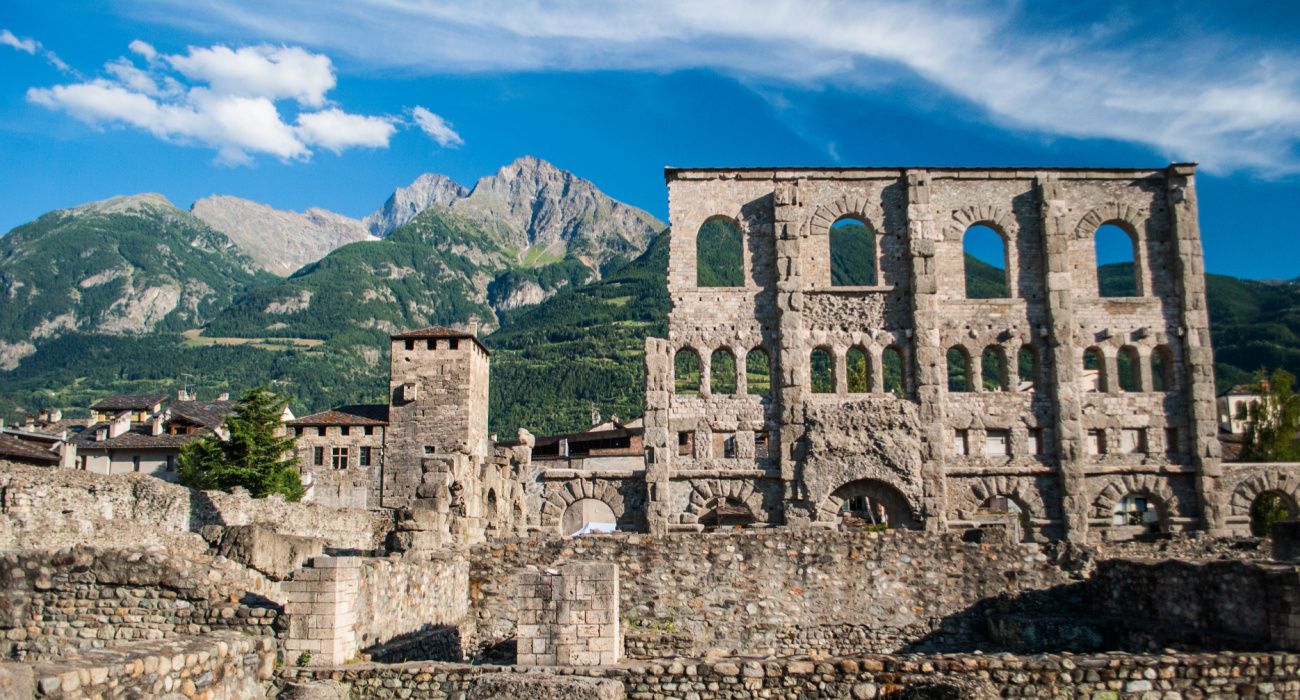This Charming Alpine Italian Town Is Actually Full Of Ancient Roman Ruins (& Here's What To See)
Known as the 'Little Roman of the Alps' Aosta is full of impressive Roman ruins together with mountains and medieval monuments. The Italian peninsula is home to many ancient Roman ruins, often overlooked by Rome and Pompeii, including the "Little Rome of the Alps" in Aosta. The town, which was conquered by the Romans in 25 BC, is known for its rich collection of archaeological sites and an open-air museum. The ruins of Aosta, which is around 110 kilometers from the major Italian city of Turin, can be explored during the day and again in the evening. The city walls are almost completely preserved, allowing visitors to walk alongside them for three kilometers or two miles. The Arch of Augustus is among the best preserved Roman triumphal arches still standing in Italy. The Roman Theater at Aosta is also a notable attraction, with its facade being 22 meters or 70 feet high.

نشرت : منذ عامين بواسطة Aaron Spray في Travel
Perhaps the most famous Roman ruins in Italy are those of Rome and Pompeii, but there are many others. The Italian peninsula was long the heartland of the Roman world, and it is full of Roman ruins and cities often overshadowed by Rome and Pompeii.
One of the forgotten Roman cities in Italy is Aosta, called the "Little Rome of the Alps." It is particularly famous for its rich collection of archaeological sites and is something of an open-air museum.
Aosta is one of the many well-preserved ancient Roman cities worth exploring across the former Roman world. Another great city to see is Tarraco just outside of Barcelona in Spain's Catalan region while the forgotten city of Timgad in Algeria is an exceptional example of Roman urban planning. Start your Italian history adventure in Aosta; here's what to know and see.
The Ancient Roman History Of The Alpine City Of Aosta
Aosta is in far northern Italy near the border with France in the European Alps. This region was conquered by the Romans during the reign of Augustus and the town was founded in 25 BC. In Roman times, the colony was known as Augusta Praetoria Salassorum.
The site of Aosta had been the center of the Celtic Salassi tribe, but the Romans killed or sold many of them into slavery and cemented their control over the area. The colony was established with 3,000 retired veterans of the Roman army and after 11 BC Aosta became the provincial capital of the Alpes Graies (Gray Alps) province.
Related: This Is Ancient Rome's Largest Temple (And Yes, It's Impressive)
The Impressive Ruins Of Aosta: The 'Little Rome Of The Alps'
Plenty of ancient Roman ruins at Aosta are preserved, including the ancient city walls.
The city walls called are almost completely preserved and visitors can walk beside them for three kilometers or two miles (although the city with the best preserved Roman city walls is Lugo in Spain).
Some of the ancient Roman gates like Porta Praetoria and Porta Decumana, Porta Principalis Sinistra, and Porta Principalis Dextera are well-preserved. The Roman walls have twenty towers spaced out in even intervals. The walls are around 9 feet (2.75 meters) thick at the base and 6 feet (1.8 meters) thick at the top.
One of the most important Roman monuments remaining is the Arch of Augustus. The arch commemorates the defeat of the Celtic Salassi and the establishment of a Roman colony there to act as a bulwark in the Alps to protect Italy.
The Arch of Augustus is among the best preserved Roman triumphal arches still standing today. Elsewhere in Italy, the Arch of Augustus in Rimini (dedicated to the same emperor) is one of the oldest Roman arches that is intact today.
The Roman Theater at Aosta is also a notable attraction. Its facade is some 22 meters or 70 feet high and was once able to accommodate up to 4,000 spectators. The theater was restored in 2009 and is once again used for modern performances.
The street plan of the ancient city is typical for a Roman city. The main street was 33 feet or 10 meters wide and divided the city into two even halves. The rectangular streets divided the city into 64 blocks (called insulae).
Additionally, Aosta is home to a number of medieval structures including the 11th-century cathedral and the Romanesque-Gothic Collegiate church of Sain Ursus.
Related: From Morocco To Egypt: 10 Ancient Greco-Roman Sites To Discover
What To Know About Visiting Aosta In Italy Today
Aosta is noted for its exceptional amount of visible Roman ruins - some say it has the second most in Italy. The ruins of Aosta are impressive and should be visited during the day and again in the evening when they are illuminated.
Aosta is located around 110 kilometers or 70 miles from the major Italian city of Turin and is lovingly set in the Italian Alps. Many of the Roman ruins (such as the arch and the bridge) are scattered throughout the modern town and are free to visit. Other sites, such as the Roman Theater, require an entry ticket and have opening and closing times.
While there, take the time to visit the Aosta Regional Archeological Museum and browse its impressive exhibits of Roman artifacts related to various aspects of Roman life.
• Includes: Admission To Roman Theater, Museum, Megalithic Area of Aosta, Forensic Crypotoporticus, & The Early Christian Church of San Lorenzo
Admission tickets are purchased at the Aosta Regional Archeological Museum and at the Roman Theater. For opening hours and more information, refer to the official website.
Aosta is a stunning destination combining Roman ruins with the Alps and impressive medieval castles.
